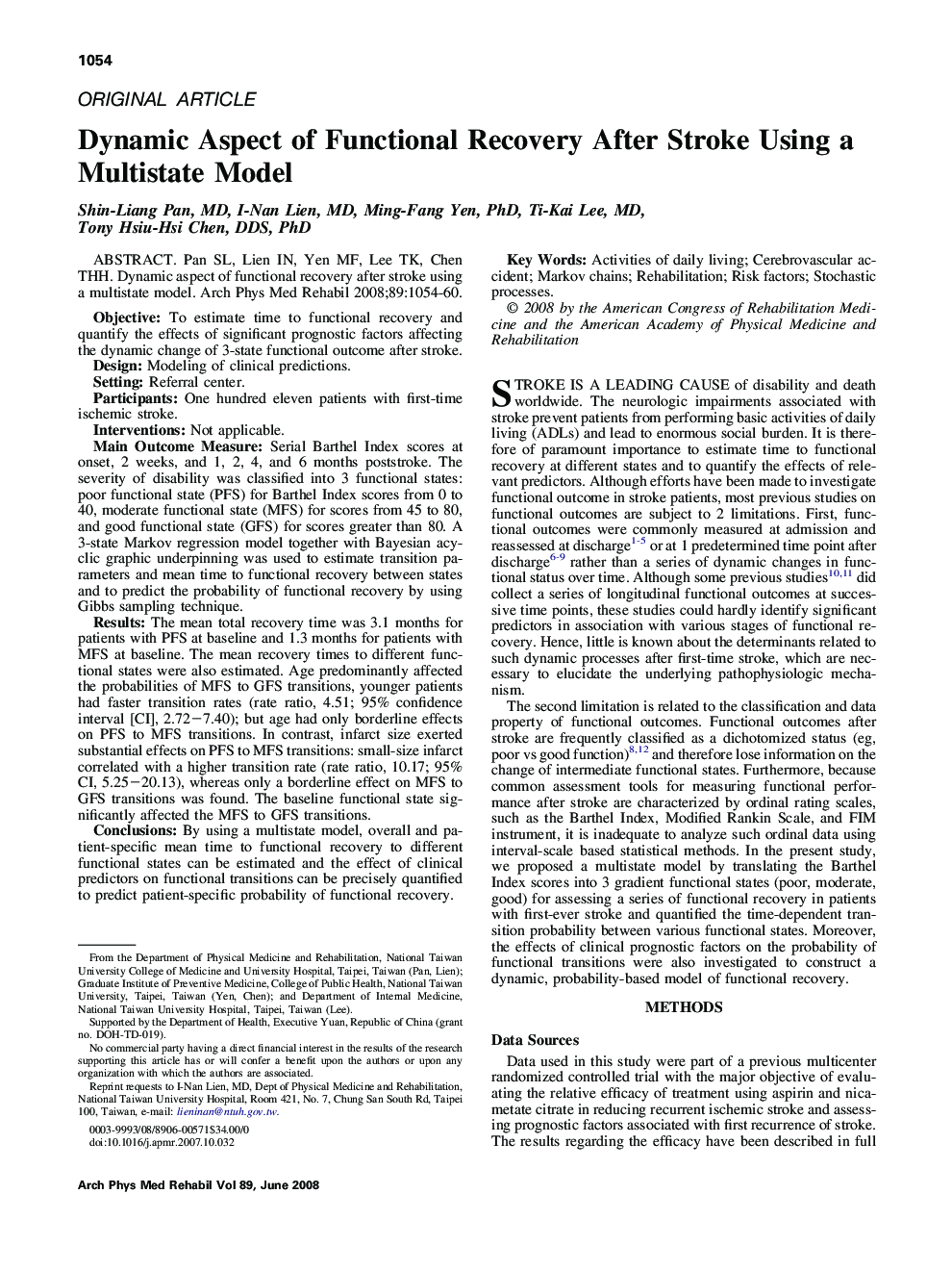| کد مقاله | کد نشریه | سال انتشار | مقاله انگلیسی | نسخه تمام متن |
|---|---|---|---|---|
| 3451775 | 1595778 | 2008 | 7 صفحه PDF | دانلود رایگان |

Pan SL, Lien IN, Yen MF, Lee TK, Chen THH. Dynamic aspect of functional recovery after stroke using a multistate model.ObjectiveTo estimate time to functional recovery and quantify the effects of significant prognostic factors affecting the dynamic change of 3-state functional outcome after stroke.DesignModeling of clinical predictions.SettingReferral center.ParticipantsOne hundred eleven patients with first-time ischemic stroke.InterventionsNot applicable.Main Outcome MeasureSerial Barthel Index scores at onset, 2 weeks, and 1, 2, 4, and 6 months poststroke. The severity of disability was classified into 3 functional states: poor functional state (PFS) for Barthel Index scores from 0 to 40, moderate functional state (MFS) for scores from 45 to 80, and good functional state (GFS) for scores greater than 80. A 3-state Markov regression model together with Bayesian acyclic graphic underpinning was used to estimate transition parameters and mean time to functional recovery between states and to predict the probability of functional recovery by using Gibbs sampling technique.ResultsThe mean total recovery time was 3.1 months for patients with PFS at baseline and 1.3 months for patients with MFS at baseline. The mean recovery times to different functional states were also estimated. Age predominantly affected the probabilities of MFS to GFS transitions, younger patients had faster transition rates (rate ratio, 4.51; 95% confidence interval [CI], 2.72−7.40); but age had only borderline effects on PFS to MFS transitions. In contrast, infarct size exerted substantial effects on PFS to MFS transitions: small-size infarct correlated with a higher transition rate (rate ratio, 10.17; 95% CI, 5.25−20.13), whereas only a borderline effect on MFS to GFS transitions was found. The baseline functional state significantly affected the MFS to GFS transitions.ConclusionsBy using a multistate model, overall and patient-specific mean time to functional recovery to different functional states can be estimated and the effect of clinical predictors on functional transitions can be precisely quantified to predict patient-specific probability of functional recovery.
Journal: Archives of Physical Medicine and Rehabilitation - Volume 89, Issue 6, June 2008, Pages 1054–1060